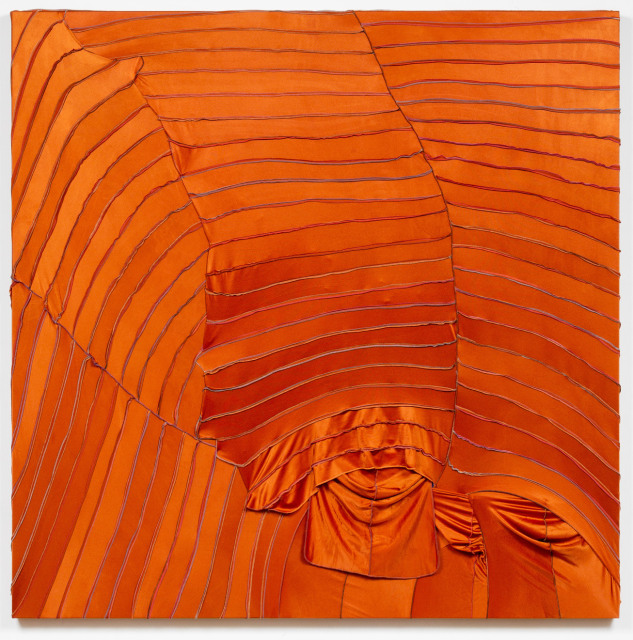Carbon 12 is pleased to present a solo presentation by Anthony Olubunmi Akinbola at this year’s edition of The Armory Show. The charted discourse is one that rummages through topics of Black culture and its appropriation, commodification, and fetishization.
Anthony Olubunmi Akinbola’s (b. 1991, USA) artistic practice emphasizes a conceptual consideration of the readymade. Working from this specific quality, he incorporates materials such as du-rags, readymade objects, cassava, and palm oil to focus on the significant cultural impact of Black communities in America. In distinguishing their purpose and use as unique to African American identity, Akinbola sheds light on the implications of consumerism and capitalism on objects of heritage by acknowledging their possible commodification within spaces vulnerable to mass media.
The interaction that materializes between the works is one of cultural significance and influence, a dialogue between material and message. Waiving the use of traditional materials to create his works, Akinbola uses traditional objects instead. Filled to the brim with color and symbolism, Akinbola’s Durag canvases and totemic creations present a celebration of cultural narratives that builds on these multidimensional artworks. The artist further explores themes of consumption and the commodification of Black culture.
In unravelling the contexts which define the Durag, Akinbola makes known their purpose in the care and maintenance of Black hair. While largely defined by their popularity within African communities, the CAMOUFLAGE series explores other threads within this larger topic; highlighting a commentary on global consumption, and the circumstances which continually reinforce structures of capitalism. The fabrics exist in a spectrum of hues, their multi-layered fabrication an allusion to the complex fashioning of identity.
To communicate the complexities of the Black-person-in-America identity, Akinbola transforms everyday objects, particularly those with cultural significance in Black communities in America. Stacking hundreds of readymade objects, such as hair-pomade cans, to create restrained totems, Akinbola’s approach to these objects becomes an investigation of the relationship between Africa and Black America. To delve even further, it becomes an examination of commodity and capitalism and their relation to the fetishization of Black America, and the idea of giving value to objects beyond their utility.
Anthony Olubunmi Akinbola’s multifaceted approach encircles matters of race, culture, and identity and simultaneously and deconstructs these themes by examining significant objects from both cultural and commercial spheres. While the iconography that permeates his overarching body of work delves into the exoticization and fetishization of Black culture, they continuously raise these concerns in contemporary platforms of discussion and ultimately, on a universal stage.

